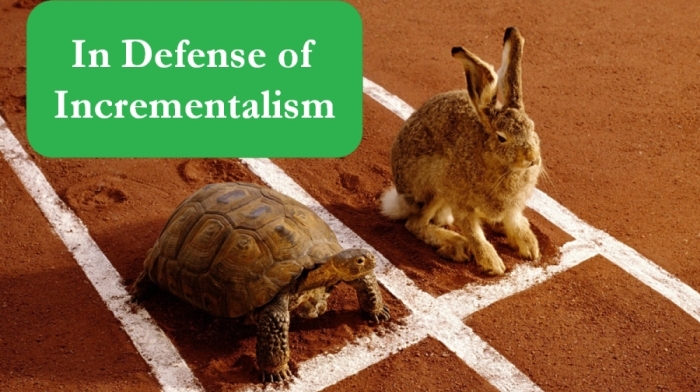
In an era where innovation is the buzz word of the day, incremental improvements can often get overlooked in favor of the big, sexy moon shots made popular by Silicon Valley companies. And to be sure, innovations are fantastic when they work, but they are inherently high risk, high reward activities. When I was working at Toyota, I made an in-depth study of Toyota’s culture of continuous improvement, popularized by the term kaizen. What I learned is that the true benefit of incremental improvement was far more subtle than what gets improved.
Somewhat ironically, Toyota revolutionized modern manufacturing by not being revolutionary. Kaizen is not actually a translation of “continuous improvement”, its meaning is closer to incremental change (“change for the better”). It stands in contrast to kaikaku(“revolutionary change”) which is what we call innovation. More simply, incrementalism is a 10% improvement and innovation is 10-fold improvement. Toyota’s approach is to spend most of its time on incremental improvement and leave innovative improvements to a few highly focused “breakthrough activities” each year. At the time Toyota was creating what became known as the Toyota Production System the common approach of the day was to look for “big wins” and big improvements and not sweat the small stuff. Instead, Toyota gathered countless 1-2% improvements which added up to big efficiencies.
When I first started at Toyota, I thought that the value of the improvement was the improvement — the underlying process or metric that you were working on. After years of work, study, and mentoring, I came to understand that there are two key benefits of incrementalism that have nothing to do with actual process being improved: standardization and learning.
A truism in the TPS world is that something cannot truly be improved until it is standardized — you need to write it down. The reasoning is that improvements you make to a non-standardized process are temporary and backslide easily, ending with the next change of personnel or competing priority. Standardization combined with incrementalism means that the small improvements add together and compound over time — they’re not lost.
However, innovation or radical change usually involves throwing out the old way and creating something all new. There are times when this is highly effective, but you then must write out an completely new standardized process. Incremental change, however, allows for the standardized work to be modified and remodified. It also provides practice with using standardization as a malleable tool, rather than a straight jacket.
The other subtle benefit of incrementalism (and in my opinion the most important one) is that every incremental improvement is an opportunity for learning. When learning a skill (as opposed to learning knowledge) you need opportunities to practice. And the more repetition of practice you have access to, the quicker you learn and develop expertise in that skill.
Innovation is often the domain of few specialized experts (like R&D departments or process engineers) and has few repetitions. This means that innovation teams have precious few opportunities to practice and hone their improvement skills (they have to rely on subject matter expertise). In contrast, Toyota’s approach to incrementalism is to engage the entire workforce in making small improvements and, more importantly, practicing making improvements. The goal is to form a daily habit of improvement where the people closest to the work are making the improvements, rather than waiting for process engineers or other specialists to get around to it. And when you combine this with Toyota’s approach to developing problem solvers (described in Mike Rother’s Toyota Kata), each repetition of an improvement cycle is an opportunity to learn, practice, and coach. So instead of few people learning in few repetitions, you have many people learning in many repetitions. This, more than any other aspect of incrementalism is what makes it transcend from an individual 2% improvement to a culture of engaged employees who are practiced problem-solvers.
And that is also why incrementalism seldom makes a good story or Hollywood movie — it’s not about the lone hero with the sudden flash of insight that changed the world. It’s about team work and many hands making for light work. It’s about paying attention to what you’re doing and not just going through the motions. It’s not sexy. But it works.
I must give credit to Freakonomics for the inspiration for the title of this post. Their episode, “In Praise of Incrementalism“, discusses incrementalism more broadly across the development of Renaissance art, the U.S. Civil Rights Movement, and a British cycling team. The main gist is that innovation makes for great stories, but incrementalism does most of the heavy lifting throughout history, even if difficult to notice. Thanks, Steven.


